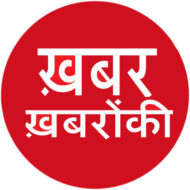
Ira Singh
Khabar Khabaron Ki,02 Jan’24
In the latest International Debt Report released by the World Bank, striking disparities have emerged between India and China’s approaches to external lending. The report, released annually, sheds light on the contrasting strategies employed by the two Asian giants, significantly impacting their global financial engagements.
India has increasingly become an important player as a bilateral creditor, with special focus on its immediate neighborhood,according to the report.In comparison, China, which continues to dominate as one of the largest bilateral creditors, has a diverse lending strategy with a focus on the African continent. Aiming to become the leader of the Global South, India in recent years has also started to follow a diversification strategy and expand its presence in Africa with development finance assistance to countries like Malawi, Mozambique, Ghana, and others.
Escalating debt vulnerabilities in many low or middle-income countries (LMICs) and overlapping crises—such as the Covid-19 pandemic, the war in Ukraine,devastating climate events, and the daunting global macroeconomic environment—are forcing an increasing number of countries to seek debt restructuring from external creditors.This has brought both China and India to the negotiating table, often with contrasting views on debt restructuring, as seen in the cases of Zambia and Sri Lanka, stated report.

Unsustainable Debt in Developing Countries:
The International Debt Report 2023 highlights a concerning trend of rising fears about unsustainable debt in developing countries.
One in four developing nations is effectively excluded from international capital markets, with 18 sovereign debt defaults in the past three years, surpassing the total of the previous two decades.The poorest nations face a nearly paralyzing burden, with 28 countries eligible for World Bank support at high risk of debt distress, threatening progress on global development goals. Increasing debt servicing costs divert crucial spending away from health and education, posing a grave danger to the prospects of these nations.
Way forward:
The divergent external lending strategies of India and China, especially in the context of unsustainable debt facing developing nations, highlight the need for a nuanced and proactive approach. Further, enhancing debt transparency, engaging with stakeholders, and strengthening reporting systems are critical.Multilateral support and timely, comprehensive data are vital for fostering sustainable development and averting economic crises, believe experts.
Experts emphasize the significance of balancing developmental goals with sustainable debt management practices, particularly in light of global economic uncertainties. Both India and China face the challenge of navigating the complex landscape of international lending while ensuring responsible financial practices and safeguarding long-term economic stability.As the global financial landscape continues to evolve, the contrasting approaches of India and China towards external lending underscore the multifaceted dynamics influencing international financial systems. The World Bank report serves as a pivotal resource, spotlighting the divergent paths pursued by these economic powerhouses and prompting critical discussions on the implications of their strategies for global economic stability and development.
